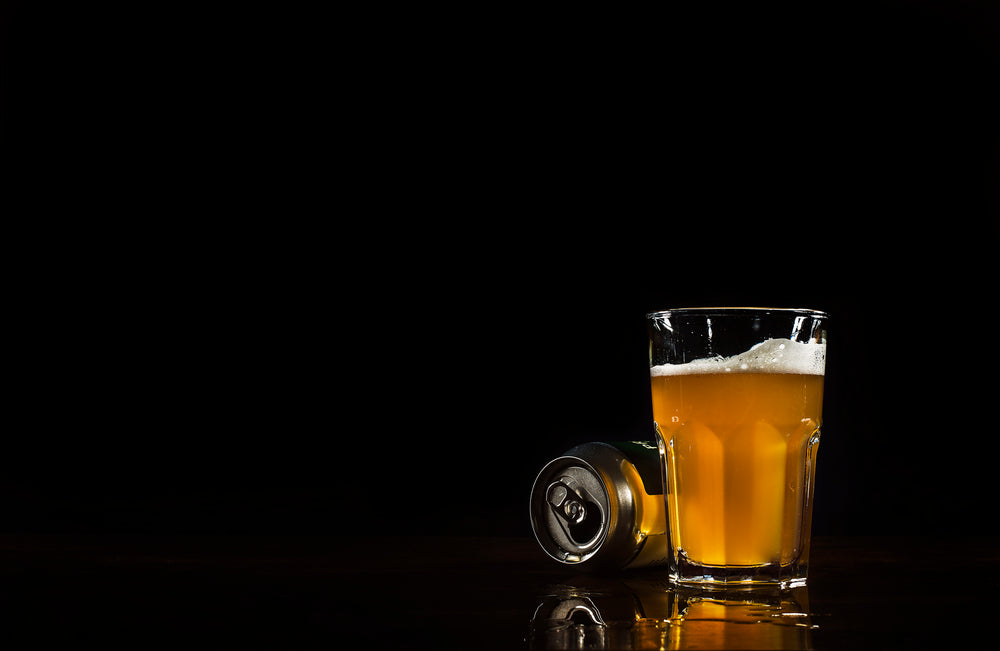Beer is an alcoholic beverage produced by extracting sugars from malted cereals (most often barley), boiling the wort with hops, and fermenting with yeast; in legal definitions such as those in Germany, standard ingredients comprise malted barley, hops, water, and yeast, and typical strengths vary by style, commonly around 3–8% alcohol by volume (ABV) or higher in specialty beers, according to Britannica. Archaeochemical evidence for beer-like beverages appears in the late 4th millennium BCE at Godin Tepe in the Zagros Mountains, where calcium oxalate (“beerstone”) residue indicates barley beer in a vessel dated to circa 3500–3100 BCE, as summarized by the Smithsonian’s Museum Conservation Institute, citing an Analytical Chemistry study by Michel, McGovern, and Badler (
Museum Conservation Institute). Textual traditions include the Sumerian Hymn to Ninkasi, a poetic description of brewing processes preserved in the Old Babylonian period, presented with translation and commentary by the Cuneiform Digital Library Initiative (
CDLI).
Ingredients and raw materials
- –Malted grain: Barley is the predominant malt because germination and kilning supply enzymes (notably α- and β‑amylases) that convert starch to fermentable sugars during mashing; other cereals (wheat, rice, maize, rye, sorghum) are used in some traditions, as detailed by
Britannica and its brewing overview (
Britannica).
- –Hops: The female cones of Humulus lupulus contribute bittering resins and aromatic oils; boiling isomerizes α‑acids (humulones) to iso‑α‑acids that provide bitterness and aid preservation, explained in
Britannica’s hop article and homebrewing science treatments such as Brew Your Own’s hop chemistry overview (
Brew Your Own).
- –Water: Mineral composition influences flavor and style; historical examples include Burton upon Trent’s sulfate‑rich water shaping pale ales and Plzeň’s soft water shaping pilsner, discussed in
Britannica’s types of beer.
- –Yeast: Ales typically employ top‑fermenting Saccharomyces cerevisiae, whereas lagers use bottom‑fermenting hybrids, Saccharomyces pastorianus, derived from S. cerevisiae and S. eubayanus; the wild parent S. eubayanus was identified in 2011, clarifying lager yeast origins (
PNAS;
Wiley, Yeast).
Brewing process
- –Malting and milling: Barley is steeped, germinated, and kilned to produce malt; the malt is then milled to expose starch granules (
Britannica).
- –Mashing and lautering: Crushed malt is mashed in water to activate enzymes that convert starch to sugars; the sweet wort is separated from spent grain (
Britannica).
- –Boiling with hops: The wort is boiled to sterilize, coagulate proteins, and extract/isomerize hop resins for bitterness and retention of selected aromatics (
Britannica;
Brew Your Own).
- –Cooling, aeration, and fermentation: The cooled, oxygenated wort is pitched with yeast; ales generally ferment at warmer temperatures with top‑cropping strains, while lagers ferment cool with bottom‑cropping hybrids (
Britannica;
Britannica’s lager entry).
- –Maturation and packaging: Young beer is clarified and conditioned. Carbonation arises naturally from fermentation (including bottle or cask conditioning) or by forced dissolution of carbon dioxide before packaging (
American Homebrewers Association;
The Beer Connoisseur).
Yeast, microbiology, and brewing science
- –Ale and lager yeasts: Ales use Saccharomyces cerevisiae strains selected for warmer fermentation, while lagers use S. pastorianus, a cold‑tolerant hybrid enabling low‑temperature fermentation and storage; genomic and ecological work identified S. eubayanus as the wild parent of lager yeast (
PNAS;
Wiley, Yeast).
- –Pure culture and pasteurization: In the 1860s, Louis Pasteur’s Études sur la Bière established microbiological foundations for controlling beer spoilage and fermentation; the text is accessible in translation via Project Gutenberg and interpreted in museum and academic exhibits (
Project Gutenberg;
University of Chicago Library). Emil Christian Hansen at the Carlsberg Laboratory later developed pure yeast culture methods that transformed consistency in industrial brewing, summarized in
Britannica’s beer article and discussed in the UChicago exhibit (
University of Chicago Library).
Historical development
- –Ancient Near East: Chemical evidence from Godin Tepe indicates early barley beer production; CDLI’s presentation of the Hymn to Ninkasi records brewing steps in poetic form (
Museum Conservation Institute;
CDLI). Brewing was central in Mesopotamia and also well attested in Ancient Egypt, where brewing scenes appear in Old Kingdom tomb art (
Britannica).
- –Hops and lagering: Hops were used in Germany by the 11th century and spread to Britain by the 15th; bottom‑fermentation was practiced in Germany by 1420, and the term Lager derives from storage at low temperatures, as explained by
Britannica and its focused article on lager (
Britannica).
- –Purity regulation: The 1516 Bavarian Reinheitsgebot limited beer ingredients (barley, hops, water) and regulated prices; the Library of Congress traces its text and later codifications in German law (
Library of Congress, In Custodia Legis).
- –Industrialization: Thermometry and saccharometry improved process control; mechanical refrigeration pioneered by Carl von Linde enabled year‑round lager brewing and extended distribution via refrigerated rail, as covered by
Britannica and by a museum overview of brewing refrigeration technology (
University of Chicago Library).
Styles and classification
- –Ales and lagers: Ales (top‑fermented) encompass pale ales, porters, and stouts; lagers (bottom‑fermented) include pilsner, Dortmunder, Märzen, Bock, and more (
Britannica;
Britannica). Spontaneously fermented lambic and gueuze rely on ambient microflora rather than pitched yeast (
Britannica).
- –Style guidelines: Modern categorization is documented in judges’ handbooks; for example, the BJCP’s 2021 guidelines define English India Pale Ale with ABV typically 5–7.5% (
BJCP). The Brewers Association updates its compendium annually, reflecting evolving commercial practice (
Brewers Association, 2024).
- –Strength and alcohol content: Britannica describes most lagers as light‑colored with moderate ABV around 3–5% and many ales 4–6.5%, while other strong styles (e.g., barley wines) exceed 8% (
Britannica summary;
Britannica). Non‑alcoholic products (≤ about 0.5–2.0% ABV, depending on jurisdiction and method) and “alcohol‑free” beers (approaching 0.0–0.1%) are produced via restricted fermentation or physical dealcoholization, per
Britannica.
Health and social aspects
- –Ethanol is a psychoactive, toxic substance that can cause dependence; harmful alcohol use is linked to increased morbidity and mortality from noncommunicable diseases, injuries, and certain infections. The World Health Organization’s 28 June 2024 fact sheet summarizes global burden and risk‑reduction policies (
WHO).
